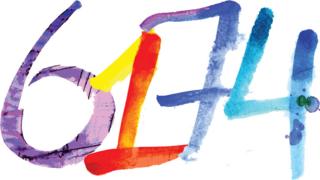- UID
- 20
- Online time
- Hours
- Posts
- Reg time
- 24-8-2017
- Last login
- 1-1-1970
|
|
━━━━━━━━━━━━━━━━━

▼ 6174 looks like any number, out of the air, without any credentials for fame.However, he has intrigued mathematicians and enthusiasts of number theory since 1949.
Why?
Well look at this so curious.
1. Choose any four-digit number that is made up of at least two different digits, including zero, for example1234
2. Organize the digits in descending order, which in our example would be4321
3. Now, organize the number in ascending order:1234
4. Subtract the smallest number from the largest number:4321 - 1234
5. And now repeat the last three steps
Let's do it:
*.4321 - 1234 = 3087
Then we organize the digits of 3087 in descending order and 8730 remains, and in ascending order, 0378, and subtract:
*.8730 - 0378 = 8352
again, we organize the digits of the result 8352, and subtract them:
*.8532 - 2358 =6174
Again, in descending order -7641- and ascending -1467-, and we subtract:
*.7641 - 1467 =6174
As you will see, from now on it is not worth following, as we would only repeat the same operation.
Let's deal with another number.How about 2005 ?:
*.5200 - 0025 = 5175
*.7551 - 1557 = 5994
*.9954 - 4599 = 5355
*.5553 - 3555 = 1998
*.9981 - 1899 = 8082
*.8820 - 0288 = 8532
*.8532 - 2358 =6174
*.7641 - 1467 =6174
It turns out that it doesn't matter which number you start with, you always reach 6174 and thereafter, the operation is repeated, with the same result over and over again: 6174.
An addict
This is known as theKaprekar Constantas the one who discovered the mysterious beauty of 6174 and presented it at the Mathematical Conference of Madras in 1949 was Dattatreya Ramchandra Kaprekar (1905-1986), a confessed addict of number theory.
"A drunk wants to keep drinking wine to stay in that pleasant state. The same goes for me when it comes to numbers," he used to say.
Kaprekar was a school teacher in a small Indian population called Devlali or Deolali and was often invited to speak in other schools about his unique methods and fascinating numerical observations.
However, several Indian mathematicianslaughed at his ideas, calling them trivial.
Perhaps they are: it should be noted that, despite being so surprising that it leads us to expect it to hide a great theorem in number theory, at least so far, Kaprekar's constant has not revealed anything like that.
The one who laughs last ...
Since not everything has to be useful to be attractive, fun and interesting, Kaprekar became known inside and outside India as many other mathematicians found their ideas intriguing.
And like him, they kept playing with their numbers.
Yutaka Nishiyama, from the Osaka University of Economics, Japan, for example, says in the+ plusmagazine that he used a computer to see if there were a limited number of steps to reach 6174.
After verifying, he established thatthe maximum number of steps was 7, that is, if you do not reach 6174 after using the Kaprekar operation seven times, you have made a mistake in your calculations and you must try again.
In other explorations it was discovered that the same phenomenon occurs when instead of starting with four-digit numbers you start with those ofthree.
Let's try the number 574:
*.754 - 457 = 297
*.972 - 279 = 693
*.963 - 369 = 594
*.954 - 459 =495
*.954 - 459 =495
As you can see, the magic number in this case is 495.
And no, it does not happen in other cases: only when you start with three or four digit numbers (at least 2 to 10 digits, which is what has been verified).
6174 in technicolor
Meanwhile, in India, the nonprofit company Scigram Technologies Foundation, which is developing a "Computer Learning Platform" especially for rural and tribal schools, took 6174 andturned it into the three colorful illustrations that adorn this articleof here on.
Co-founder Girish Arabale explained to BBC Mundo that what they always look for is to especially inspire school children who generally hate math, showing them what they call "Aha moments!"to motivate them.
"The constant Kaprekar 6174 is one of those beautiful numbers and the steps leading to its discoverycreate a moment 'Aha!'that is usually lacking in traditional math curricula. "
Then, they assigned a color to each number of steps required to reach 6174 (remember that there were a maximum of 7 steps):
... wrote a code that can be easily recreated on a Raspberry Pi (the computer that is a popular tool in STEM education) in a Wolfram language, which is freely available on Raspberry Pi ...
... and executed the program for each of the 10,000 4-digit numbers that exist, creating patterns with the steps leading to the number 6174 arranged in a grid with the different colors.
Recreational math
Kaprekar's constant was not the only contribution of that passion for numbers to recreational mathematics.
Among its collection of ideas is also theKaprekar number.
It is a number with the interesting property that if it is squared, adding two equal parts of the result gives you the original number.That operation is the Kaprekar operation.
To clarify, an example.
297² = 88.209 and 88 + 209 = 297
Some more examples of Kaprekar numbers are: 9, 45, 55, 703, 17,344, 538,461 ... try them and see!
Remember: when dividing the number whose parts you are going to add, leave the longest part to the right (in the example, when dividing into two 88209 you have two groups: one with two digits and the other with three, therefore, following the indications, when separated it remains 88 and 209 and not 882 and 09).
► Literal translation of the article originally published here:: Source |
Rate
-
View Rating Log
|